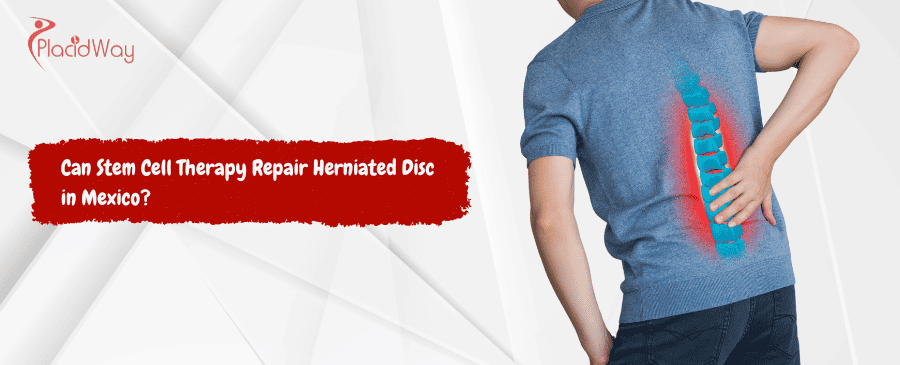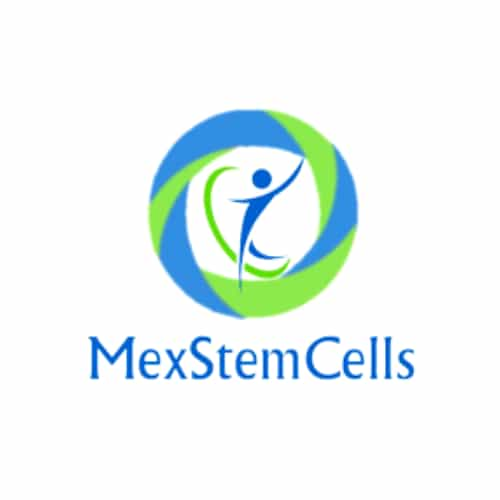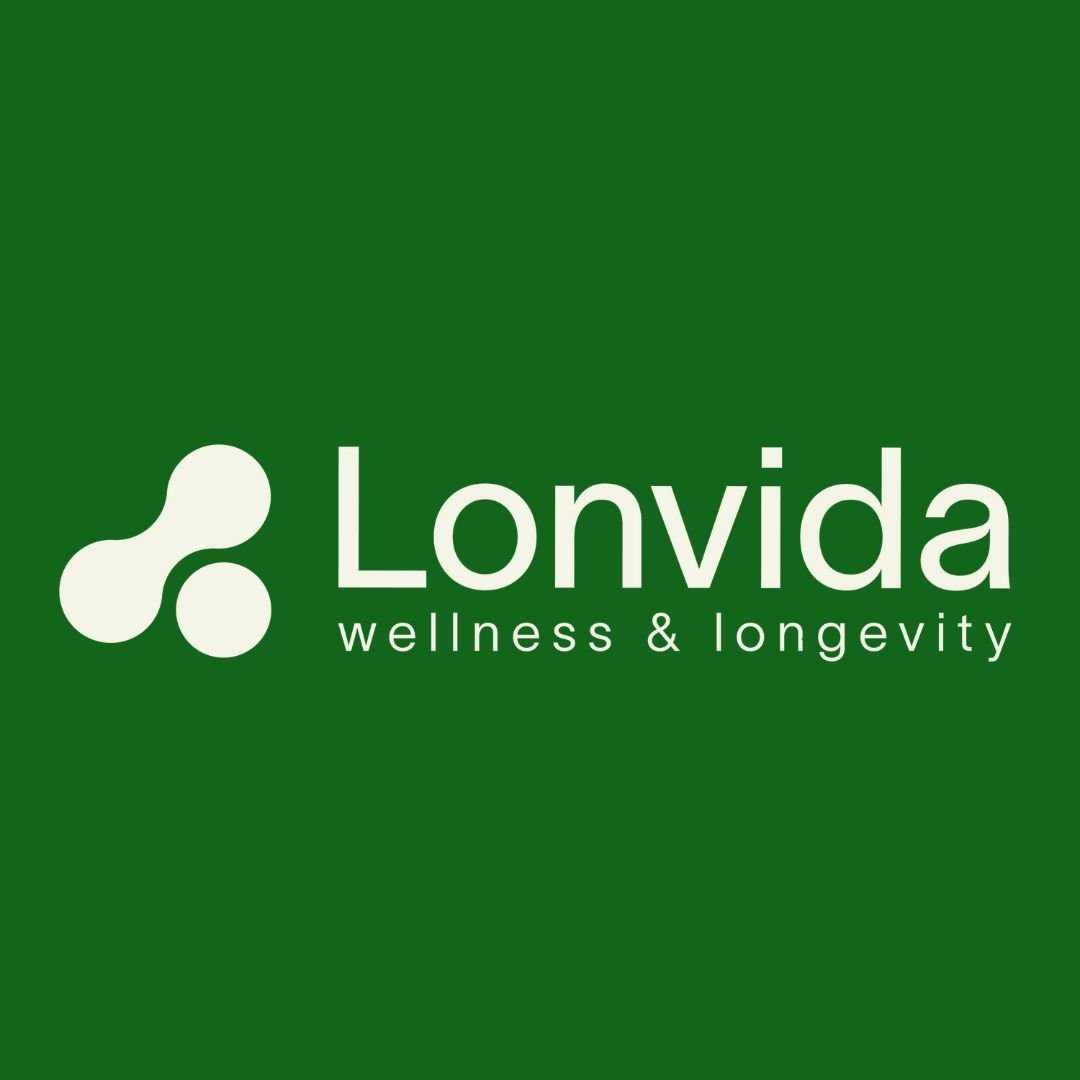Affordable Herniated Disc Stem Cell Repair in Mexico

A herniated disc can be a source of chronic and debilitating pain, significantly impacting your quality of life. While traditional treatments like physical therapy, medication, and even surgery have been the go-to solutions, many are now turning their attention to regenerative medicine. Specifically, stem cell therapy for herniated discs is gaining traction as a viable and effective alternative. Mexico has emerged as a key destination for this innovative treatment, offering advanced procedures at a fraction of the cost seen in other countries. This has led many to wonder, can stem cell therapy truly repair a herniated disc, and is Mexico a safe and reliable place to receive this treatment?
The core idea behind stem cell therapy is to harness the body's own natural healing capabilities. Stem cells are unique in their ability to develop into different types of cells, and when injected into a damaged area like a herniated disc, they can help regenerate the damaged tissue, reduce inflammation, and alleviate pain. In Mexico, numerous clinics now specialize in regenerative medicine, utilizing cutting-edge technology and adhering to international standards to provide safe and effective treatments. This guide will delve into everything you need to know about undergoing stem cell therapy for a herniated disc in Mexico, from the procedure itself to the costs, success rates, and what you can expect during your journey to recovery.
What is a herniated disc and how does it cause pain?
Your spine is made up of a series of bones called vertebrae, and in between each vertebra lies a rubbery cushion known as an intervertebral disc. These discs act as shock absorbers, preventing the vertebrae from grinding against each other and allowing for flexibility in your spine. Each disc has a tough outer layer, the annulus fibrosus, and a soft, jelly-like inner portion, the nucleus pulposus.
A herniated disc occurs when some of the nucleus pulposus pushes out through a tear in the annulus fibrosus. This can happen due to age-related wear and tear, a condition called degenerative disc disease, or as a result of a sudden injury. The herniated portion of the disc can then impinge on the spinal nerves, leading to a variety of uncomfortable symptoms. The pain is often described as sharp, shooting, or burning, and it can radiate from the back to other parts of the body, such as the arms or legs, depending on the location of the herniated disc.
Common Symptoms of a Herniated Disc:
- Pain: This is the most common symptom and can range from a dull ache to intense, debilitating pain.
- Numbness or Tingling: You might experience a "pins and needles" sensation in the area of the body served by the affected nerve.
- Weakness: The muscles controlled by the affected nerve may become weak, making it difficult to lift or hold items.
Can stem cell therapy effectively repair a herniated disc?
The primary goal of stem cell therapy for herniated discs is to address the root cause of the pain by repairing the damaged disc tissue. Unlike traditional treatments that often focus on managing symptoms, regenerative medicine aims to heal the injury. The stem cells, once introduced to the site of the herniation, can differentiate into the types of cells that make up the disc, helping to repair the tear in the annulus fibrosus and restore the integrity of the disc.
Furthermore, stem cells have powerful anti-inflammatory properties. The inflammation surrounding a herniated disc is a major contributor to pain. By reducing this inflammation, stem cell therapy can provide significant pain relief. The growth factors and other signaling molecules released by the stem cells also create a healing environment that encourages the body's own repair mechanisms to kick in.
What is the procedure for stem cell therapy for a herniated disc in Mexico?
The process of receiving stem cell therapy in Mexico is generally straightforward and minimally invasive. Here's a breakdown of what you can typically expect:
- Consultation and Evaluation: Your journey will begin with a thorough consultation with a specialist. This will involve a review of your medical history, a physical examination, and imaging tests like an MRI to pinpoint the location and severity of the herniated disc.
- Stem Cell Harvesting: If you are deemed a good candidate, the next step is to harvest the stem cells. The most common sources are your own bone marrow (aspirated from the hip bone) or adipose (fat) tissue (collected through a mini-liposuction procedure). This is typically done under local anesthesia.
- Processing and Concentration: The harvested sample is then taken to a laboratory where the stem cells are isolated and concentrated. This process ensures that a high number of viable stem cells are ready for injection.
- Injection: Using fluoroscopy (a type of X-ray imaging) for precise guidance, the concentrated stem cells are injected directly into the damaged intervertebral disc. This ensures that the cells are delivered exactly where they are needed to initiate the repair process.
What types of stem cells are used to treat herniated discs in Mexico?
Mesenchymal stem cells (MSCs) are multipotent stromal cells that can differentiate into a variety of cell types, including bone cells, cartilage cells, muscle cells, and fat cells. This makes them ideal for orthopedic and regenerative applications. Their ability to become cartilage-like cells is particularly beneficial for repairing the tough, fibrous tissue of the intervertebral discs.
The use of autologous stem cells (cells from your own body) is a key advantage. It eliminates the risk of an allergic reaction or immune system rejection that can sometimes occur with donor cells. This makes the procedure safer and more tailored to the individual patient.
What is the cost of stem cell therapy for a herniated disc in Mexico?
The significant cost difference is one of the primary reasons why many people travel to Mexico for this treatment. The lower cost does not, however, mean a compromise in quality. Many clinics in Mexico are equipped with state-of-the-art technology and staffed by highly trained and experienced medical professionals. The overall lower cost of living and operational expenses in Mexico contribute to the more accessible pricing.
Factors Influencing the Cost:
- The clinic's reputation and location.
- The specific type of stem cell procedure.
- The number of treatment sessions required.
- Whether additional therapies are included in the treatment plan.
| Country | Average Cost (USD) |
|---|---|
| Mexico | $5,000 - $15,000 |
| United States | $25,000+ |
What are the success rates of stem cell therapy for herniated discs in Mexico?
The success of the treatment depends on several factors, including the severity of the disc herniation, the patient's overall health, and their adherence to post-procedure care instructions. Many patients begin to notice improvements within a few weeks to a couple of months after the procedure, with continued improvement over the following year as the stem cells continue to work and regenerate tissue.
It is important to have realistic expectations. While many experience substantial relief, complete eradication of pain is not always guaranteed. However, for many, the reduction in pain and the improvement in function are life-changing, allowing them to return to activities they once enjoyed.
Is stem cell therapy for herniated discs in Mexico safe?
Mexico's regulatory body for healthcare, COFEPRIS (the Federal Commission for the Protection against Sanitary Risks), oversees medical treatments, including stem cell therapies. Many top clinics in Mexico also have international accreditations, further ensuring a high standard of care. However, it is crucial to do your research and choose a clinic with a proven track record of safety and success.
Potential Risks and Side Effects:
While the procedure is generally safe, as with any medical intervention, there are potential risks, although they are rare. These can include:
- Infection at the injection site.
- Bleeding.
- Pain or soreness at the harvest or injection site.
These risks are minimized when the procedure is performed by an experienced medical team in a sterile environment.
What is the recovery time for stem cell therapy for a herniated disc?
Immediately following the procedure, you may experience some soreness at the injection site, which can be managed with over-the-counter pain relievers. You will be encouraged to rest for the first day or two. After that, you can gradually resume your normal daily activities. Your doctor will likely recommend avoiding strenuous activities and heavy lifting for a few weeks to allow the stem cells to engraft and begin the healing process.
Physical therapy is often recommended as part of the recovery process to help strengthen the muscles supporting the spine and improve flexibility. This can help to enhance the long-term results of the stem cell therapy.
How do I choose the best clinic for stem cell therapy in Mexico?
Here are some key factors to consider when selecting a clinic:
- Doctor's Experience and Credentials: Ensure the doctors are specialists in regenerative medicine and have extensive experience with the specific procedure you are considering.
- Clinic Accreditations: Look for clinics that are accredited by national and international bodies, which indicates a commitment to high standards of quality and safety.
- Patient Testimonials and Reviews: Read reviews and testimonials from previous patients to get an idea of their experiences and outcomes.
- Technology and Facilities: A reputable clinic will have modern, state-of-the-art facilities and use advanced technology for their procedures.
- Transparency: The clinic should be transparent about their procedures, costs, and potential outcomes.
What should I expect during my trip to Mexico for stem cell therapy?
Medical tourism in Mexico is a well-established industry, and many clinics are experienced in assisting international patients. They can help you with travel arrangements, and their staff are often bilingual, speaking both English and Spanish. This helps to ensure a smooth and stress-free experience.
Your trip will typically involve an initial consultation, the procedure itself, and a follow-up appointment before you head home. The total time you need to spend in Mexico can vary, but it is usually around a week to ten days.
Are there any alternatives to stem cell therapy for herniated discs?
The best treatment option for you will depend on the severity of your condition and your personal preferences. For many, stem cell therapy offers a middle ground between conservative treatments that may not provide lasting relief and invasive surgery that comes with a longer recovery time and a higher risk of complications. It is a promising option for those who are looking for a minimally invasive way to address the underlying cause of their back pain.
What questions should I ask my doctor before getting stem cell therapy in Mexico?
Here are some important questions to ask:
- How many stem cell procedures for herniated discs have you performed?
- What is your success rate with this procedure?
- What type of stem cells do you use and where are they sourced from?
- What is included in the total cost of the treatment?
- What does the recovery process look like?
- What are the potential risks and how do you mitigate them?
- Can you provide me with patient testimonials or case studies?
How long do the results of stem cell therapy for herniated discs last?
The longevity of the results depends on various factors, including the patient's lifestyle after the procedure. Maintaining a healthy weight, engaging in regular exercise, and practicing good posture can all help to prolong the benefits of the treatment. In some cases, a follow-up treatment may be recommended after a few years to maintain the positive effects.
Am I a good candidate for stem cell therapy for a herniated disc?
Generally, ideal candidates are in good overall health and have realistic expectations about the potential outcomes of the therapy. Individuals with certain medical conditions, such as active infections or cancer, may not be suitable for this treatment. Your doctor in Mexico will conduct a comprehensive evaluation to determine your candidacy.
What is the legal and regulatory status of stem cell therapy in Mexico?
The legal framework in Mexico allows for a wider range of stem cell therapies to be offered than in some other countries. This has contributed to the growth of medical tourism for regenerative medicine. However, it is essential for patients to do their due diligence and choose a clinic that operates ethically and transparently within the established regulations.
Ready to explore your options for a pain-free life? PlacidWay can connect you with leading clinics for stem cell therapy for herniated discs in Mexico. Explore our network of trusted healthcare providers and take the first step towards your recovery journey.


.png)














Share this listing